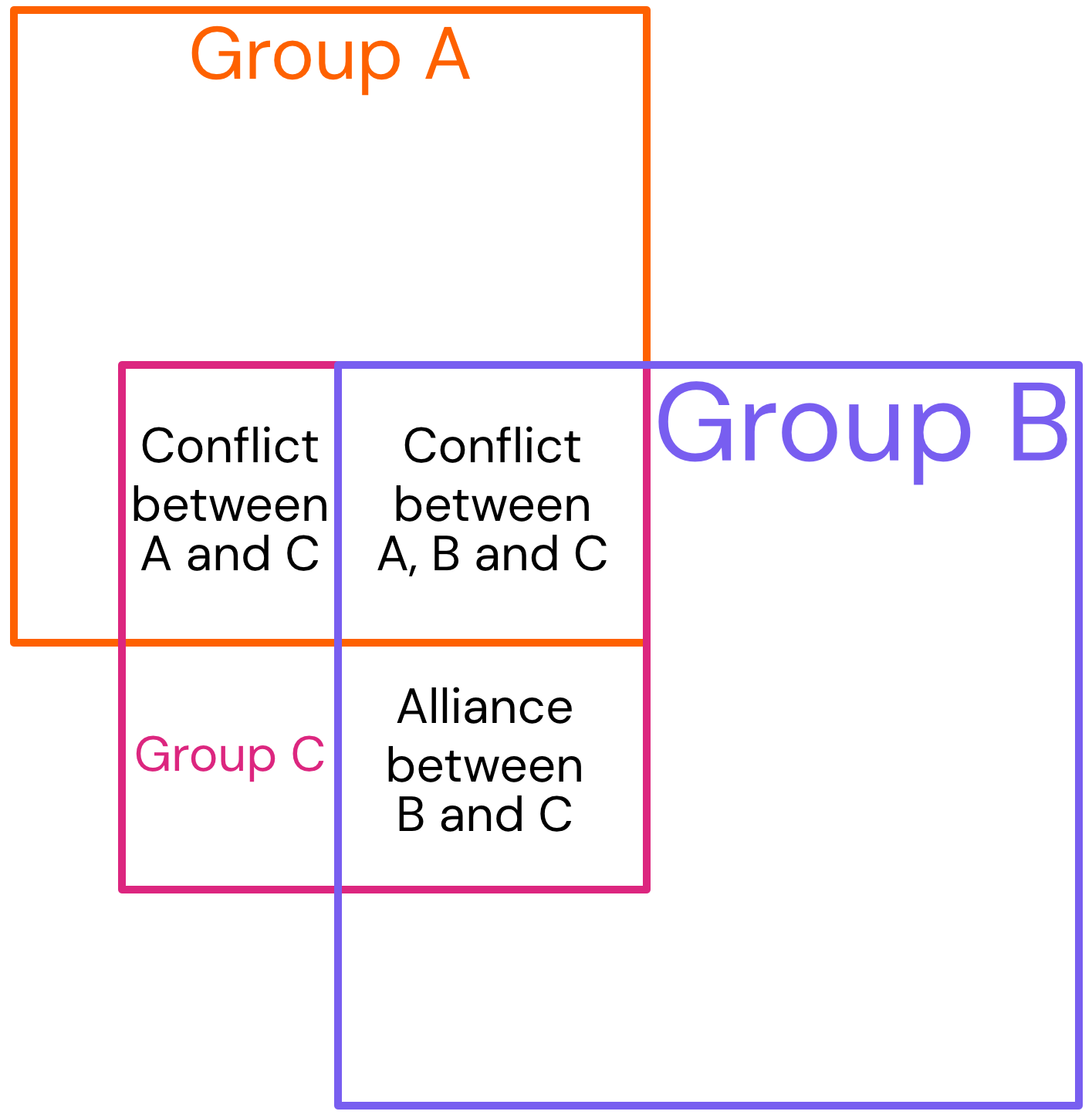Make factions fight
Connect factions with conflict
This article contains affiliate links, meaning I get a commission if you make purchases using these links, at no cost to you.I’ve outlined a framework called faction-blocks. It gets factions built and gives them compact descriptions, but how do we connect them together?
Conflicts are the meat of faction activity in RPGs. We’re going to use something without specific mechanics to represent this, so you can adopt it to any system.
And it’s me, so we’re using diagrams. First, some constraints.
Less is more
Seven factions is plenty. In fact, I’d say it’s a sensible maximum threshold, three being a great starting point and even A-ok for a whole campaign.
Examples: the Mork Borg campaign Tephrotic Nightmares, a chunky 250+ hex ashcrawl has 6 factions. Salvage Union’s False Flag module uses the same number, and Death in Space comes with 4 starter factions.
In an entire world, while there can be more factions, only have 3-7 of them relevant at a time. Factions might come in or leave the situation. If the party moves to a new location, they may be dealing with a new set of factions.
Diagram
Let’s take three groups: A, B, and C. They each have a square:
Bigger square → more powerful faction. Write stuff about the faction in its square. Resources/capabilities come to mind - you have more space to write more resources (which a more powerful faction should have).
The overlaps of the squares represent conflicts/alliances. We can mix these, like B and C having an alliance but also having a conflict shared with A.
A bigger overlap means the the conflict/alliance is bigger. It takes up more space in the square, leaving less space to list a faction’s resources. The literal size of the overlap is proportional to how much of the faction’s resources are taken up by the conflict/alliance.
Do this in pencil or digitally, so you can update the diagram whenever needed. If the faction situation changes, shift the squares accordingly. This can be really cool, because the movement can affect other relationships.
In the example diagram above, if C’s alliance with B reduces, the conflict between A and C could get bigger. You can also replace the overlaps with new stuff, such as a new conflict or alliance, or rearrange things so that the relationship doesn’t exist at all.
Conflicts/Alliances
To fill in conflicts, look at your faction blocks. What do the factions need to achieve their aims that result in opposition? Limited resources is almost always the answer. A Queen’s favour? Resource. Ancient knowledge? Resource. Opposed ideology? Ideological dominance is a limited resource.
Identify the resources that are limited and hence contested. The question is, do the factions oppose each other, or ally and work together?
I suggest that alliances should always be of convenience because that feels realistic. B allies with C because B wants A distracted from what B is doing. B promises C a share of whatever they are working towards, albiet a much smaller slice than B will take. If there is nothing superior to be gained by cooperation, opposition is the default.
You might end up with something like this, which is a ‘cyberpunk’-ish one I cooked up:

That’s it. Make your faction-blocks, then your squares. Update the squares as needed. Drop by the discord server to chat about this more, I want to hear your thoughts.
To draw these irl, I use Faber-Castell Pitt Pens (though sometimes I’m lazy and use my Lamy fountain pen) most often in Muji notebooks (the BEST notebooks).
Recommendations
Blog: House of Unripe Figs is a new substack that’s doing fictional tours of hand-illustrated maps, as though they are part of a gallery. Creative right? This is going to be a very interesting series to follow, they’ve started off with a compact sea fortress!
Game: 20XX: Handbook for the Recently Deceased (free) has been released as part of the one-page RPG jam. I like 20XX games for their directness and simplicity, this is no different. It seems like a great option to pull out if you want to do the ‘player characters as ghosts after a TPK thing’, or just to run a spooky one-shot.





Brilliant!
is there an easy digital tool to make these?